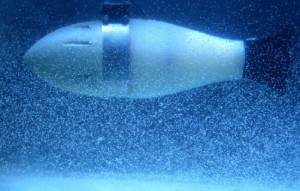 The goal of making robotic fish is to make them as functional as real fish but with the added sensors that humans want for detecting pollution, data about water, and so on.
The goal of making robotic fish is to make them as functional as real fish but with the added sensors that humans want for detecting pollution, data about water, and so on.
But to get there, they need to have the sensors fish naturally have — including lateral line sensing. This is how fish detect and use flow features like currents in water.
Tallinn University of Technology reports, “Though flow is a highly volatile and unsteady state of matter, it can nonetheless be measured and characterized based on many salient features that do not change much in space and time (such as flow direction or turbulence intensity, for example)”.
So far, researchers have been able to build a robotic fish that can detect the path of least resistance, so to speak, through the water to save energy and its ability to detect flow also allows it to swim upstream or hold its position in the water against the current.
The FILOSE project has contributed to our understanding of the “fish-centric” viewpoint of the aquatic environment. “Robotic experiments have also helped us to understand fish behaviour”, says FILOSE collaborator Prof. William Megill, who led the University of Bath’s contribution to the project.
“By recording flow sensor data from a robotic fish head which we’ve programmed to move like a real fish in similar flow conditions, we are able to understand what fish are able to perceive.”
Though much more experimentation is needed, researchers are clearly getting closer and closer to an ideal robotic fish that can be used for myriad things in studying bodies of water.
From: Jaymi Heimbuch | Tree Hugger
Source: http://www.bluechannel24.com/
Dear User/Visitor! Please, answer on our questions: tick off one of the positions – your answer will make us able to improve our site and make it more interesting and useful!

